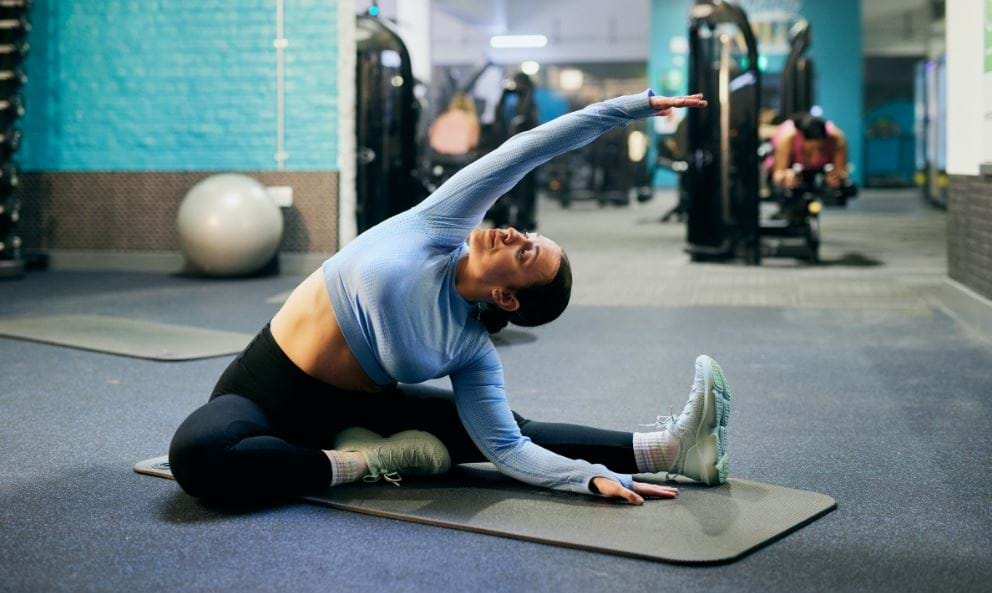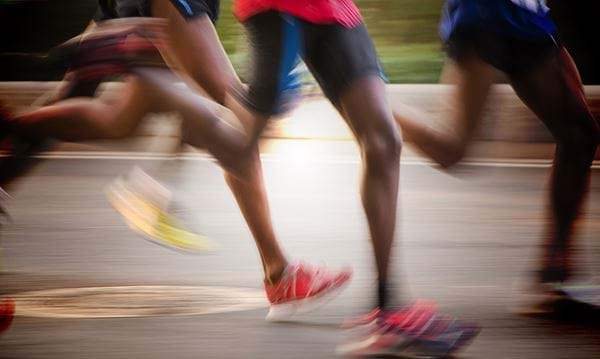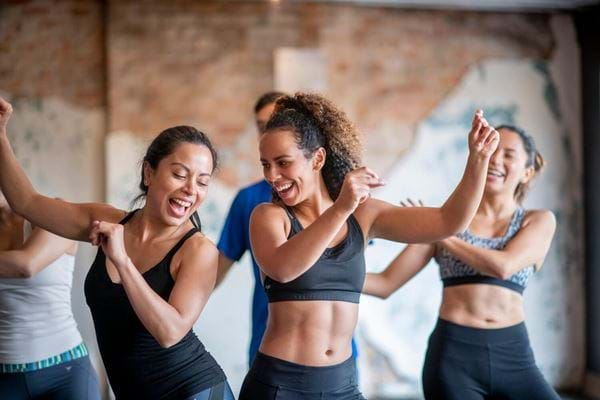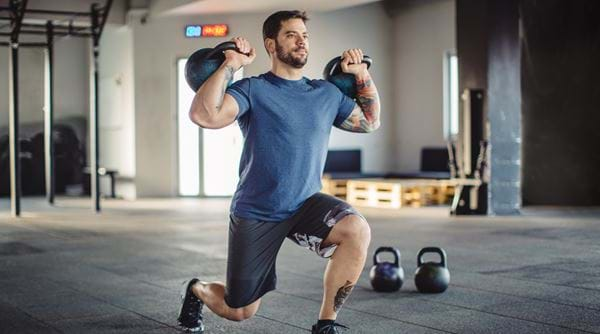10 Of The Best Stretching Exercises For Beginners

We all know that exercise is good for us, and more people than ever are hitting the gym to improve their health. However, there is one aspect of exercise that is often overlooked – stretching.
Stretching doesn’t always feel as satisfactory as other types of exercise. There’s no sweat, there’s no PBs, and actually, the process of stretching can be quite uncomfortable – especially if you’ve being hitting the weights, have poor posture, or live a sedentary lifestyle, all of which can lead to tight, stiff muscles.
In this blog, PureGym Personal Trainer Reece Dorling looks at why stretching is important, how often and when you should stretch, and the best beginners stretching exercises to try.
Jump straight to stretching exercises for beginners
What are the benefits of stretching?
While you don’t have to dedicate hours every week to stretching, there are so many benefits to incorporating stretches into your training programme!
-
Increases flexibility and mobility
Stretches are essentially flexibility exercises for beginners. It helps to ease muscle stiffness, which over time lengthens the muscles, leading to greater flexibility. Flexibility allows our joints to have a greater range of motion, which is an important part of joint health. As we age, our natural range of motion decreases; stretching can actually slow down this process.
-
Reduces the risk of injury
Tight muscles are much more prone to injuries like strains than flexible muscles are. This can have a knock-on effect on tendons as well – if the muscle is unable to stretch for a movement, the tendon may overexert. Regular stretching helps to reduce how stiff muscles are, so they’re less prone to injury. Plus, using dynamic stretches (we’ll cover this shortly) to warm up before a workout will ensure your muscles are ready to function, which further reduces the risk of injury.
-
Relieves stiff, tight muscles
Unless you’re in a manual job, it’s likely you spend a lot of time sitting down. Muscles are meant to be moved, so the less mobile we are, the tighter they can become. Not only is this uncomfortable, but it reduces range of motion so that any movement we do is not as functional. For example, sitting all day can lead to tight hamstrings, which can cause the hips and pelvis to rotate, affecting everything from how we walk to our squats at the gym.
-
Improves posture
Tight muscles don’t just impact how we move, they also influence our posture by pulling the body into different positions. Poor posture also leads to tight muscles, so it’s a vicious cycle! Sitting for long periods plays havoc on our posture and muscles – stretching regularly can help alleviate this.
-
Aids recovery
When we exercise, our muscles undergo stress and experience microtears. While the repair of these tears is what leads to muscle growth, it can cause delayed onset muscle soreness (DOMS) – which is often very uncomfortable! Stretching after a workout helps to deliver fresh oxygen and nutrients to the muscles, which helps with recovery, and also prevents the muscles from tightening over time as a result of the microtears. Pairing stretches with a balanced diet, lots of water, and a good night’s sleep, can go a long way in warding off soreness.
-
Enhances performance
Having mobile joints and flexible muscles can have a huge impact on our performance in the gym or playing a sport. When mobility is limited and you can’t reach full range of motion, it’s difficult to perform exercises with the correct form, or move functionally – and your speed and power can also be reduced. Stretching can help to gain back your range of motion and allow for better performance.
What are the different types of stretching?
Stretching falls into two categories: dynamic and static. Both dynamic and static stretches have benefits, but there are times when you should and shouldn’t use them.
- Dynamic stretching
Dynamic stretching involves actively moving our muscles and joints through their full range of motion. Dynamic stretches can be used as a warm up to prime the muscles and joints before a workout, or throughout the day to encourage blood flow and reduce stiffness. - Static stretching
With static stretching, you position yourself in a way that stretches a certain muscle and hold that position for a period (usually around 20 – 45 seconds). While these stretches are uncomfortable as they aim to lengthen stiff muscles, be careful not to stretch too far – they shouldn’t ever be painful. Static stretches help to lengthen the muscles over time, however you should only perform static stretches after a workout when the muscles are warm and pliable, as static stretching cold muscles can lead to tears and strains.
How often should you stretch?
When it comes to stretching, more is more! At the very minimum, we recommend adding 10-15 minutes of dynamic stretching before a workout to get your muscles and joints ready, and 10-15 minutes of static stretching after a workout to prevent stiffness and help recovery. If you work in a job that involves sitting down all day, you should also aim to get up and stretch your hamstrings, glutes, shoulders, and back.
However, adding more stretches into your weekly routine is recommended if you want to reap all the benefits, such as improved posture and increased flexibility. A good stretch routine for beginners might look like 15 minutes of dynamic stretches followed by 15 minutes of static stretches 2-3x a week, in addition to before and after your workouts.
If your goal is to get very flexible, for example if you want to do the splits or backbends, you’ll need to dedicate a lot of time and effort on stretching your muscles. These types of stretches require daily work and can take years to achieve – there is no simple split stretches for beginners! Focus first on lengthening the muscles and correcting your posture, and from there you’ll be able to build greater flexibility.
The Best Dynamic Stretching Exercises For Beginners
Perform these before a workout, or throughout the day to relieve stiffness.
-
Leg Swings
- Balance on one leg, holding onto a wall for balance if you need to.
- Bring your other leg back as far as you can without leaning forward and then swing your leg forward and back continuously to get your hamstrings warm.
- Gradually increase the height in which you can swing your leg. Be sure you can swing your leg to a level that you can tolerate.
- Complete 5-10 swings per leg.
-
Arm Circles
- Begin in a standing position with your arms by your side.
- Start slowly swinging your arms forward and gradually increase the range as you warm up.
- Your body should remain still and upright throughout.
- Complete 15 circles before switching direction.
-
Lunge With Overhead Reach
- Begin by stepping forward with one leg and dropping your back knee down towards the floor.
- As you lower your hips down, slowly reach your arms over your head without arching your back excessively.
- Push off your front leg to stand back up and bring your arms down by your side.
- Perform this 10 x per leg before switching sides.
-
Inchworm
- From standing up, begin by placing your hands on the floor while keeping your legs straight. If you find this too difficult, allow a slight bend in your knee.
- Slowly walk your hands forward to bring your body into a push up position.
- Walk your hands back towards your feet and stand up. This is one rep.
- Complete 10 reps.
-
World’s Greatest Stretch
- From a push up position, bring your right foot up towards your right hand. Your left knee should be slightly bent, or you can place it on the floor if needed.
- Once your right foot is flat on the floor, reach with your right hand up towards the ceiling and look up.
Bring your hand back to the floor and return
The Best Static Stretching Exercises For Beginners
These should only be done after a workout, or if you've thoroughly warmed up your muscles beforehand.
-
Child’s Pose
This yoga pose helps to stretch out the upper back, lower back, and hips, making it great for anyone who sits down for long periods of time! While many stretches can feel uncomfortable, this is a great stretch for relieving pain from stiff muscles.
- Start in a kneeling position, with your knees pushed out and toes on top of the floor.
- Keeping your hips back, lower your stomach in between your legs and rest your forehead on the mat.
- Slowly stretch your arms out as far as you can whilst keeping your hips back.
- Once you’ve reached your end point hold that position for 20-30 seconds.
-
Standing Tricep Stretch
- Stand with your feet at shoulder width apart and bring your left arm up, bending the elbow towards your right shoulder blade behind you.
- Use your right hand to gently push on your left elbow to push the stretch so you reach a point that you can feel the stretch down your triceps and down into your lats.
- Hold the stretch for 20-30 seconds before switching sides.
- Repeat each side for 2 sets.
-
Standing Calf Stretch
- Stand facing a wall and step your left foot back so you’re in a staggered stance, both feet flat on the floor. Place your hands on the wall.
- Push your right knee forward over your toes and lean your upper body towards the wall, while keeping your left leg straight and heel on the floor.
- As you lunge forward you should feel a stretch in the back of your left calf. Hold this position for 20-30 seconds before swapping sides.
- Repeat for one more set, lunging further forward if possible.
-
Standing Quad Stretch
Tight quads can lead to knee and back pain, so regularly stretching and lengthening the quad muscles can help alleviate and prevent these issues.
- Start by standing with your feet hip-width apart, and then lift your left foot back towards your glutes. Hold on to a wall for support if needed.
- Grab your foot with your left hand and pull it back towards your glutes while pushing your hips forward.
- Once you feel a stretch in your quads, hold this position for 20-30 seconds.
- Swap sides and repeat twice on each leg.
-
Lying Figure 4 Stretch
This is a great beginner hip flexor stretch which stretches your hip abductors and glutes, muscles which can get tight as a result of sitting all day.
- Begin by lying on your back, feet on the floor, and knees bent towards the ceiling.
- Place your left foot on your right knee, then reach through and grab your left knee.
- Keeping your head and shoulders on the floor and your neck relaxed, slowly pull you’re your left knee towards your chest until you feel a stretch along your hips.
- Hold this position for 20-30 seconds before swapping sides.
- Repeat each side for 2 sets.
Try introducing these stretches into your routine a few times a week – you’ll be surprised how quickly you start to see a difference! If you’re not already, make sure to include strength training alongside your stretching to ensure your muscles are strong as well as flexible, as this will help to further improve posture and prevent injuries.
Ready to get started? Find your nearest PureGym and join today.


